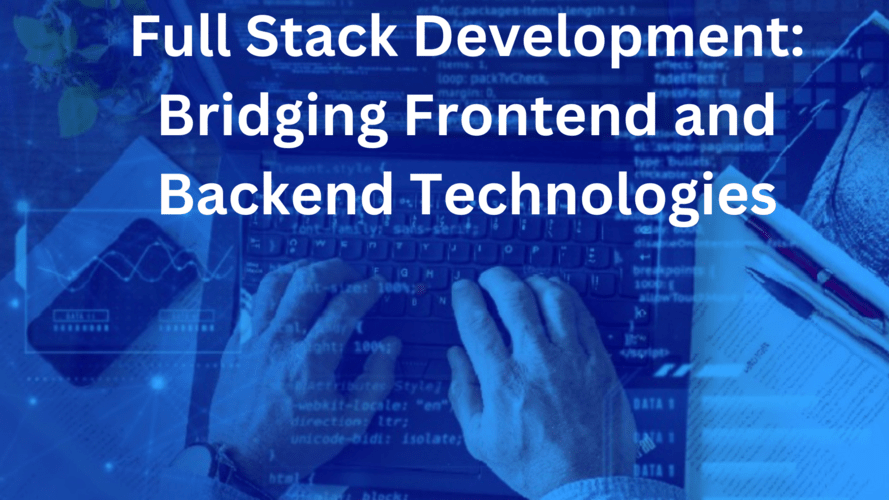
In the vast landscape of software development, full-stack development emerges as a versatile approach that bridges the realms of frontend and backend technologies. It embodies the convergence of skills, allowing developers to navigate seamlessly between designing user interfaces and crafting robust server-side logic. This holistic approach empowers professionals to create cohesive web applications, from the user-facing interface to the underlying infrastructure. Let’s delve into the intricacies of full-stack development and explore how it fosters innovation and efficiency in the ever-evolving digital landscape.
The Essence of Full Stack Development
At its core, full-stack development encapsulates proficiency in both frontend and backend technologies. Frontend development revolves around creating interactive user interfaces using languages such as HTML, CSS, and JavaScript. It encompasses the visual elements of a website or application, focusing on user experience and interface design. On the other hand, backend development involves building the server-side logic, managing databases, and handling requests from the frontend. Technologies like Node.js, Python, Ruby on Rails, and Java are commonly used for backend development.
Versatility and Adaptability
One of the key advantages of full-stack development lies in its versatility and adaptability. A full-stack developer possesses a diverse skill set, capable of handling various aspects of the development process. This versatility enables professionals to work on projects independently or collaborate seamlessly within multidisciplinary teams. Whether it’s creating responsive user interfaces or optimizing database performance, full-stack developers can navigate through different layers of the application stack with ease.
Streamlined Development Process
By encompassing both frontend and backend development, full-stack development streamlines the development process. Instead of relying on multiple specialists to handle different aspects of a project, organizations can leverage the expertise of full-stack developers to drive end-to-end development efficiently. This integrated approach fosters synergy between frontend and backend components, resulting in faster iteration cycles and smoother project delivery. Moreover, full-stack developers gain a comprehensive understanding of the entire application stack, facilitating better decision-making and problem-solving.
Enhanced Collaboration and Communication
In today’s collaborative work environments, effective communication and collaboration are paramount. Full-stack developers serve as effective mediators between frontend and backend teams, bridging the gap and facilitating seamless integration. Their ability to comprehend and contribute to both frontend and backend codebases fosters synergy within cross-functional teams. This collaborative mindset promotes knowledge sharing, accelerates learning curves, and enhances overall team productivity.
Innovation and Flexibility
Full-stack development encourages innovation and flexibility by empowering developers to explore a wide range of technologies and frameworks. With a holistic understanding of frontend and backend technologies, professionals can experiment with different tools and techniques to address specific project requirements. Whether it’s adopting cutting-edge frontend frameworks like React or Vue.js, or leveraging scalable backend solutions like GraphQL or microservices architecture, full-stack developers have the flexibility to adapt to evolving technology trends and business needs.
Challenges and Continuous Learning
Despite its benefits, full-stack development presents its own set of challenges. The ever-expanding landscape of web technologies demands continuous learning and skill enhancement. Full-stack developers must stay abreast of the latest advancements in frontend frameworks, backend technologies, and development methodologies. Moreover, juggling between frontend and backend tasks can sometimes lead to cognitive overload or context switching issues. Effective time management, prioritization, and self-discipline are essential to mitigate these challenges. For those in Vadodara looking to enhance their skills, enrolling in a reputable Full Stack Development Course in Vadodara, Noida, delhi & all other cities in India can provide structured learning and support in navigating these complexities.
Conclusion
In conclusion, full-stack development serves as a bridge between frontend and backend technologies, enabling professionals to navigate seamlessly across the entire application stack. By embracing versatility, adaptability, and collaboration, full-stack developers play a pivotal role in streamlining the development process, driving innovation, and delivering high-quality web applications. While challenges abound, the continuous pursuit of learning and the relentless quest for improvement propel full-stack development forward, shaping the future of software engineering in the digital age.







